(Many people in Alabama changed their views on slavery as this story reveals)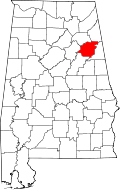 The Alabama County of Calhoun was created by the legislature December 18, 1832, from the land ceded by the Treaty of Cusseta, executed March 24, 1832. It lost part of its original territory by the formation of Cleburne, December 6, 1866, and Etowah County December 7, 1866.
The Alabama County of Calhoun was created by the legislature December 18, 1832, from the land ceded by the Treaty of Cusseta, executed March 24, 1832. It lost part of its original territory by the formation of Cleburne, December 6, 1866, and Etowah County December 7, 1866.
It was first established as Benton County, in honor of Col. Thomas Hart Benton, senator from Missouri. Among other things in his public career commending him to Alabama was his service in the War of 1813-14. As a field officer he served in Alabama, being for a time in command of Fort Montgomery, Baldwin County. Benton, a slave owner, was a political ally of John C. Calhoun, another slaveholder and a U.S. senator from South Carolina.
Dudley Snow House, 704 Snow Street, Oxford, Calhoun County, Alabama
Benton changed his mind about slavery
Through the 1820s-1840s, however, Benton’s and Calhoun’s political interests diverged, with Calhoun increasingly using secession as a weapon to maintain and expand slavery throughout the United States. Benton, on the other hand, was slowly coming to the conclusion that slavery was wrong and that preservation of the union was paramount.
On January 29, 1858, Alabama supporters of slavery, objecting to Benton’s change of heart, renamed Benton County as Calhoun County in honor of the States Rights leader of South Carolina.
The same legislature, January 12, 1833, named Samuel J. Bradford, Moses Benson, Christopher A. Green, John Mattox and Matther H. Haustin (sic) commissioners, who were empowered to locate the county seat, at or near the center of the county if practicable, or, if not, at the most eligible point, not exceeding six miles from the center. The place selected was given the name Jacksonville, in grateful appreciation of the services of Gen. Andrew Jackson to the State, lands were purchased, and a court house and jail erected.
Courthouse in distance – old photograph of Calhoun County, Alabama
The legislature, January 9, 1833, elected Christopher Green judge of the county court over Willis Franklin. The county was further organized by an election, held the first Monday in March, 1833, at which James Brown was chosen sheriff, James Crow clerk of the circuit court, and William. J. Arnold clerk of the county court.
The county was visited by De Soto
The county lies within the domain of the Creek Indians. It was traversed by De Soto in 1540 on his way to Cosa. Three miles southwest of Jacksonville on Tallaseehatchee Creek was the town of Tallasseehatchee, where General Coffee defeated the Creeks, November 3, 1813. About 12 miles south of Jacksonville on the north side of Big Shoal Creek, in the vicinity of Wolfskull Creek on the south was Chinaby’s Fort, and some three miles below it, on the same side of the creek was an Indian village, whose name has not been preserved.
Scattered along the Coosa River are many pieces of evidence of very Indian occupancy. Near Choccolocco Creek, three miles southwest of Oxford on the Carver place is a large isolated mound. The site has not been identified. In the southwestern corner of the county, on Coosa River at the influx of Cane Creek is a large village site, where chipped implements and pottery are quite numerous. This is the location of Tali of De Soto’s time. Several sites are noted above this point, but none are associated with any places of historic times.
Confederate Commands from County.—The commands listed below were made up in whole or in part from this county
Infantry.
- Co. A, “Calhoun Guards,” 2d Regt.
- Co. B, “Calhoun Grays/’ 7th Regt.
- Co. D, “Alexandria Rifles,” 10th Regt.
- Co. G, “Pope Walker Guards,” 10th Regt.
- Co. H, “Choccolocco Rifles,” 10th Regt.
- Co. E, “Calhoun Boys,” 22d Regt.
- Co. I, “Mountain Guards,” 25th Regt.
- Co. A, “Calhoun Beauregards,” 26th-50th Regt.
- Co. B, “Sallie Walker Boys,” 30th Regt.
- Co. E, 30th Regt.
- Co. D, 31st Regt.
- Co. I, “Newman Pounds Guards,” 48th Regt.
- Co. K, “Moore Rifles,” 48th Regt.
- Co. C, “Oxford Rifles,” 55th Regt.
- Co. P, 58th Regt.
- Co. I, “St. Clair Sharpshooters,” 58th Regt.(in part from Calhoun).
- Co. E, 62d Regt. (in part from Calhoun).
- Co. B, 62d Regt. (in part .from Calhoun)
Cavalry.
- Co. A, 2d Regt.
- Co. G, 3d Regt.
- Co. P, 12th Regt.
- Co. D, 51st Regt. (Mounted Infantry.)
Miscellaneous.
- Co. A. (Later Co. E), 1st Battn., Confederate Infantry. (Some members had seen service in 2d Inf. Regt.)
- Co. B, “Calhoun Sharpshooters,” 5th Inf. Battn.
- Co. C, “White Plains Rangers,” 5th Inf. Battn
Early settlers of Benton County include William H. Garrett who moved from Tennessee to Benton in 1833.
Other early settler surnames include PORTER, RICHEY, WILLIS, KELLY, ERWIN, DODSON, LLOYD, ROLAND, ARNOLD, MARTIN, COOLE, LYLE, GREGG, WOODWARD, HOUSTON, FLEMING, WALKER, GREEN, RAINEY, HOLLINGSWORTH, NISBET, WILSON, DICKINSON, NOAH, HEATHCOCKS, SEEBER, PENN, WOOD, NUNNELLEY, BRUMETTE, LESTER, FLEMMING, WHITE, BURT, HUBBARD, CRUTCHFIELD, WILLIAMS, GAY, POPE, PENDLETON, WOODWARD, SHRADER, BORDERS, BAKER, BOWLING, COBB, ELSTON, CUNNINGHAM, HEIFNER, JOHNSTON, MALLORY, RENFROE, JENKINS, SMYTHE, SCOTT, BORDEN, DILLARD, ARCHER, WILEY, BRYANT, GRIFFIN, BOYD, BLACK, BURROWS, BANNON, DUNHAM, DAVIS, FIELDS, GRAY, LOYD, GIVENS, MCCASLIN, MCCLELLEN, MAGILL, MORMON, REDICK, PAYNE, PHILLIPS, PEARSON, SHEPPARD, OWEN, PEARSON, KEITH, MCGHEE, LASSETTER, MASON, GARRETT, MILNER, PRICE MCBEE, COBB, YOUNG, BEDWELL, SPENCER, LIKENS, CHAMBERS, HUTCHINSON, WHITLOCK, TURNIPSEED, HOWARD, DESSEWAY, BATTLES, CHAMNESS, CLARK, MCCOY, MATTISON, DUNCAN, GRAHAM YEATMAN, MASSEY, VICEY, TATE, HUNNICUT, LARRISON, MITCHELL, CLAWSON, O’REAR, FRENCH, AINESWORTH, DYE, TROTTER, RYAN, ROBERTSON, CHAMBERS, ATCHLEY, STEREE, BARR, ELLIOTT, BOX, KENNEDY, CUNNINGHAM, TIDMORE, ANDREWS, BOATMAN, WILKINS, CROZIER, HAYNES, JONES, SAVAGE, NABORS, CRAWFORD, NORMAN, CHILTON, MCADAMS, HENDERSON, BROYLES, ELSTON, MCMICHAEL, SUBLETT, ESTILL, MCKIBBON, LEDBETTER, JACKSON, FORNEY, WARE, CROOK, INGRAM, CARY, PAYNE, CARY. STIPES, TEAGUE, NISBET, ALLEN, ARTERBERY, THOMPSON, TATUM, HARRISON, HEARD, DOTHARD, HEARD, TERRY, MCAULEY, SLATON, HOUSTON, BOLES, GWIN, FARMER, TURNER, BERNARD, PETTIT, BRIANT, BRYANT, ARCHER, WOODRUFF, PIKE, LOVE, KIMBRELL, MEYERS, DRISKELL, ROBERTS, BOOZER, OBERNDORF, COLEMAN, TURNLEY, STEVENSON, BARKER, PIRKLE, HYATT, SHERIDAN, LANFORD, MCCLELLAN, ABNEY, STEVENSON, WILKERSON, DAVIS, BENNETT, GRIFFIN, HARRIS, HUNNICUTT, VAUGHAN, OWEN, HENSON, KNIGHTON, BROCK, BURTON
During the Civil War, local Senator John Tyler Morgan raised and organized the 51st Alabama Calvary which fought with General Joe Wheeler. In addition, one of the most lauded soldiers of the war, Major John Pelham, also known as “the Gallant Pelham,” was born in Calhoun county.
A man from Connecticut established the Woodstock Iron Company
Attracted by the rich ore deposits in the Calhoun County countryside, Daniel Tyler, a former Union General from Connecticut, and Englishman Samuel Noble joined forces in 1872 to establish Woodstock Iron Company. The two men built what they deemed an “ideal” industrial community in the south-central area of the county.
Calhoun County Courthouse, Anniston, Alabama
Originally called “Annie’s Town” after Tyler’s daughter-in- law, the town’s name was eventually shortened to Anniston. By 1893 the community contained two iron furnaces, a cotton textile mill, schools, parks, paved streets, a water system, and the first electric lighting system in the state of Alabama.
Post Offices and Towns.—Revised to July 1, 1917, from U. S. Official Postal Guide
- Alexandria
- Blue Mountain
- Anniston (ch)
- Choccolocco
- De Armanville
- Duke
- Ironcity
- Jacksonville
- McPall
- Merrellton
- Ohatchee
- Oxford
- Piedmont
- Reads
- Weaver
- Wellington
Delegates to Constitutional Conventions
- 1861.—D. T. Ryan, J. M. Crook, G. C. Whatley.
- 1865.—John Foster, Isaac P. Moragne, Joseph C. McAuley.
- 1867.—James H. Autry.
- 1875.—W. M. Hames.
- 1901.—L. W. Grant, L. F. Greer, J. T. Martin, W. W. Whiteside, John B. Knox.
Senators
- 1834-5.—William Arnold.
- 1838-9.—William B. McClellan.
- 1839-40.—John R. Clarke.
- 1842-3.—Thomas A. Walker.
- 1845-6.—John R. Clarke.
- 1847-8.—William B. Martin.
- 1851-2.—Abram J. Walker.
- 1853-4.—William B. Martin.
- 1855-6.—Miles W. Abernethy. ,
- 1859-60.—Thomas A. Walker.
- 1861-2.—Thomas A. Walker
- (1863.)
- 1865-6.—William H. Forney.
- 1868.—H. C. Sanford.
- 1871-2.—H. C. Sanford.
- 1872-3.—Thomas B. Cooper.
- 1873.—T. B. Cooper.
- 1874-5.—T. B. Cooper.
- 1875-6.—T. B. Cooper.
- 1876-7.—W. P. Howell.
- 1878-9.—W. P. Howell.
- 1880-1.—L. W. Grant.
- 1884-5.—Wm. J. Alexander.
- 1886-7.—W. J. Alexander.
- 1888-9.—L. W. Grant.
- 1890-1.—L. W. Grant.
- 1892-3.—W. H. Porter.
- 1894-5.—W. A. Porter.
- 1896-7.—John W. Abercrombie.
- 1898-9.—J. W. Abercrombie.
- 1899 (Spec.).—J. W. Abercrombie.
- 1900-01.—Frederick L. Blackmon.
- 1903.—Frederick Blackmon.
- 1907.—-Frederick L. Blackmon.
- 1907 (Spec.).—Frederick L. Blackmon.
- 1909 (Spec.).—Frederick L. Blackmon.
- 1911.—Thomas E. Kilby.
- 1915.—Charles D. Kline.
- 1919.—W. P. Acker.
Representatives.
- 1834-5.—Charles Lewis.
- 1835-6.—John Turner.
- 1836-7.—John Turner.
- 1837 (called).—John Turner.
- 1837-8.—William B. Martin.
- 1838-9.—William B. Martin.
- 1839-40.—Thomas A. Walker; John Cochran; John T. A. Hughes.
- 1840-1.—Thomas A. Walker; Stephen Kelley; John T. A. Hughes.
- 1841 (called).—Thomas A. Walker; Stephen Kelley; John T. A. Hughes.
- 1841-2.—Thomas A. Walker; John Cochran; Mathew Allen.
- 1842-3.—William B. Martin; John Cochran; Miles W. Abernethy.
- 1843-4.—William B. Martin; Henry T. Reid; Mathew Allen.
- 1844-5.—William Young; Lewis D. Jones; Spartan Allen.
- 1845-6.—Abram J. Walker; Elijah Carr; Mathew Allen.
- 1847-8.—R. H. Wilson; W. R. Hanna; Giles L. Driver.
- 1849-50.—J. N. Young; Asa Skelton; G. C. Whatley.
- 1851-2.—William P. Davis; William C. Price; Mathew Allen.
- 1853-4.—William P. Davis; Asa Skelton; .J. N. Willis.
- 1855-6.—William P. Davis; Isaac P. Moragne; G. C. Ellis.
- 1857-8.—John H. Caldwell; J. J. Baugh; John H. Wright.
- 1859-60.—William H. Forney; William F. Bush; John H. Wright.
- 1861 (1st called).—William H. Forney; William F. Bush; John H. Wright.
- 1861 (2d called).—William B. Martin; S. M. Caruth; S. D. McClelen.
- 1861-2.—William B. Martin; S. M. Caruth; S. D. McClelen.
- 1862 (called).—William B. Martin; S. M. Caruth; S. D. McClelen.
- 1862-3.—William B. Martin; S. M. Caruth; S. D. McClelen.
- 1863 (called).—W. M. Hames; E, T. Reid; D. T. Ryan.
- 1863-4.—W. M. Hames; E. T. Reid; D. T. Ryan.
- 1864 (called).—W. M. Hames; E. T. Reid; D. T. Ryan.
- 1864-5.—W. M. Hames; E. T. Reid; D. T. Ryan.
- 1865-6.—William J. Borden; Henry McBee; G. C. Ellis.
- 1866-7.—William J. Borden; Henry McBee; G. C. Ellis.
- 1868.—Thomas D. Fister.
- 1869-70.—Thomas D. Fister.
- 1870-1.—James Crook.
- 1871-2.—James Crook.
- 1872-3.—J. M. Renfroe.
- 1873.—J. M. Renfroe.
- 1874-5.—L. W. Grant.
- 1875-6.—L. W. Grant.
- 1876-7.—E. H. Allen.
- 1878-9.—J. M. Sheid.
- 1880-1.—J. D. Hammond.
- 1882-3.—J. D. Hammond
- 1884-5.—W. W. Whiteside.
- 1886-7.—John M. Caldwell.
- 1888-9.—G. C. Williams.
- 1890-1.—W. P. Cooper.
- 1892-3.—G. C. Williams; L. J. Morris.
- 1894-5.—R. B. Kelly; W. C. Scarbrough.
- 1896-7.—T. W. Coleman; P. H. Brothers.
- 1898-9.—W. F. McCain; M. W. Maddox.
- 1899 (Spec.). — W. F. McCain; M. W. Maddox.
- 1900-01.—H. C. Gunnels; J. J. Arnold.
- 1903.—Joseph Johnson Arnold; Dr. Genubath Coke Williams.
- 1907.—Joseph J. Arnold; Wm. H. Cooper.
- 1907 (Spec.).—Joseph J. Arnold; Wm. H. Cooper.
- 1909 (Spec.).—Joseph J. Arnold; Wm. H. Cooper.
- 1911.—J. J. Arnold; C. D. Martin.
- 1915.—D. C. Blackwell; Dr. G. C. Williams.
- 1919.—G. C. Williams; J. C Wilson
SOURCES
- Acts, 1831-32, pp. 9, 49; 1894-95, p. 692; Local Acts, 1898-99, pp. 8, 494; State ex rel. Crow v. Emmett F. Crook, Probate Judge, 123 Ala. p. 657;
- Brewer, Alabama, p. 151; Berney, Handbook (1892), p. 273;
- Riley, Alabama as it is (1893), p. 98; Northern Alabama (1888), p. Ill;
- Alabama, 1909 (Ala. Dept. of Ag. and Ind., Bulletin 27), p. 82; U. S. Soil Survey (1910), with map; Alabama land book (1916) p. 47; Ala. Official and Statistical Register, 1903 1915, 5 vols.;
- Ala. Anthropological Society, Handbook (1910); Geol. Survey of Ala., Agricultural features of the State (1883); The Valley regions of Alabama, parts 1 and 2 (1896 1897), and Underground Water resources of Alabama (1907).
- Owen, Thomas McAdory,History of Alabama and Dictionary of Alabama Biography, Volume I.
As family historian, do you have friends and family ask you how to get started in family research? This is a hard question to answer in a few minutes. Refer them to the book below to help them get started in this fun hobby.
WHERE DO I START? Hints and Tips for Beginning Genealogists with On-line resources
Check out genealogy books and novels by Donna R. Causey



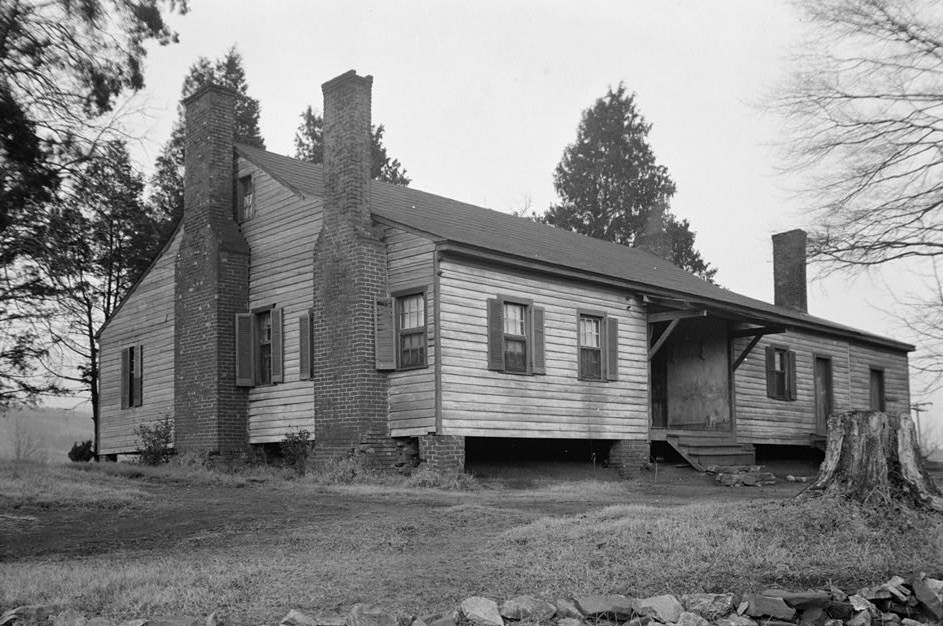
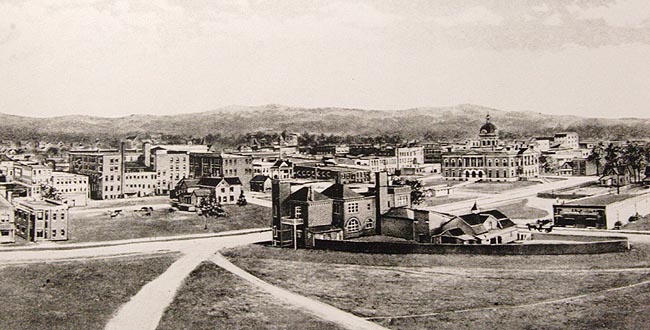
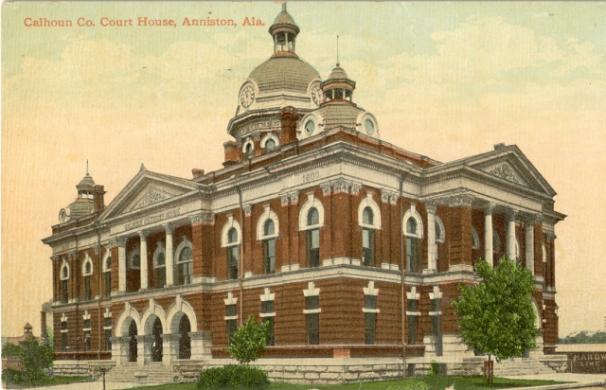
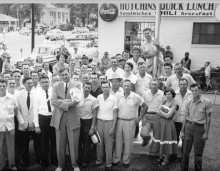

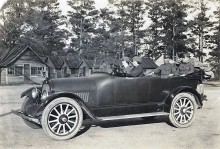
How can I find out if my grandfather, Ira Mitchell born 1899 or 1900, was a part of the Creek Indian tribe, in Coosa County, Alabama. Any help would be appreciated
I enjoy and learn so much from these posts. Thank you
Akina Luckett Canty
There is a lot of history in Calhoun County. The Alabama Room seems to have some of the most extensive. I’ve been studying my great grandfather’s family and their involvement in the Civil War. He was from the Ohatchee – Peeks Hill area and served in the 62nd Alabama Infantry Regiment at Ft. Gaines during the Battle of Mobile. The museum at Janney Furnace is worth a visit by anyone interested in Alabama history.
The courthouse pictured above is the Chambers County Courthouse in LaFayette.
No, it is not. From research, I believe the courthouse design was widely used. But, the one pictured IS Calhoun.
Bill, I grew up on Peeks Hill. When my parents bought the place in the 1980’s they were told the home place was over 100 years old. The barn, smoke house, outhouse & another old building are still standing. It’s all very interesting.
Linda Clark Fields interesting read!
ClayandEmily, my great grandfather was James Daniel Reynolds. Great grandmother was Nancy Jane Martin-Moody.
Interesting. Just another reason why I like history. Something to learn each day.
Ann Howle you might enjoy this
For art lovers, the Missouri muralist Thomas Hart Benton (1889-1975) was named for his great-great uncle Sen. Thomas Hart Benton.
Beautiful
When was the county seat moved from Jacksonville to Anniston? And why?
Bit of trivia connected with the story – Sen. Thomas Hart Benton’s great -nephew, also named Thomas Hart Benton, was one of America’s greatest artists. I’ve always loved his murals of American life.
Is it possible that the Indian village, Tallasseehatchee, was at the junction of AL Hwy 21 (Pelham Road) to Anniston and Whites Gap Road to White Plains, AL? The old Aderholt Mill is right there. The area is called Bonny Brook now. It’s where Little Tallasseehatchee Creek cross under Hwy 21 and is exactly 2.6 miles from Jacksonville main square. Also any idea where the battle between Gen. Coffee and the Creeks took place back in 1813? was it there or around the area of the Tallasseehatchee village?
All I know is that I am SICK to death watching my familes history maligned and torn down as if they were evil and bad when they did what they did because that was how it worked in their time and in the times since the world began. There is NO RACE ON THIS EARTH that has not partaken in slavery for long long years during the history of the world. And only the white race put an end to it. Only the WHITE race is blamed for ALL slavery the world over since time began as if they invented it which they MOST certainly did NOT. IT came in fact from the very lands where the people who were slaves here came from.. and other countries close by. So how about we deal with the fact that the only slavery left in this wide world is STILL IN THOSE LANDS over there.. and quite what Obama started which is the degredation of anyone white for simply being born white and of their ancestors.. And stop acting as if blacks built this entire nation when they DID NOT.. HOW MANY White men have died trying to preserve freedom here? how many ? think on that.. HOW MANY died so that statues one person does not like can stand to pay homage to someone another person doesn’t like very much. A WHOLE BUNCH but nowadays fascists have truly taken hold on the left and TRUE HERO”S statues have been taken down and why were they there? NOT BECAUSE OF SLAVERY but because we Southerners survived being utterly destroyed by OUR OWN fellow Americans to the point of desolation! AND YET we managed to rebuild in spite of HORRIBLE treatment after the way for YEARS! and STILL TO THIS DAY! So I am not really happy to hear about changes to highways and counties by those still fighting a war LONG OVER… the worst change of all the most painful was seeing the OLD DIXIE HIGHWAY TURNED into a disgusting tribute to a TRAITOR to all we ARE in AMERICA.. President Barrack Hussein Obama. Sickening to the CORE!
Very interesting.
There were more pro-emancipation societies in the South than the north before the war.
Trying to stir crap,.we aren’t renaming counties
Bless you for taking a stand and now bowing to political correctness